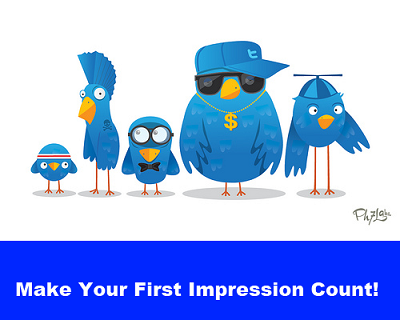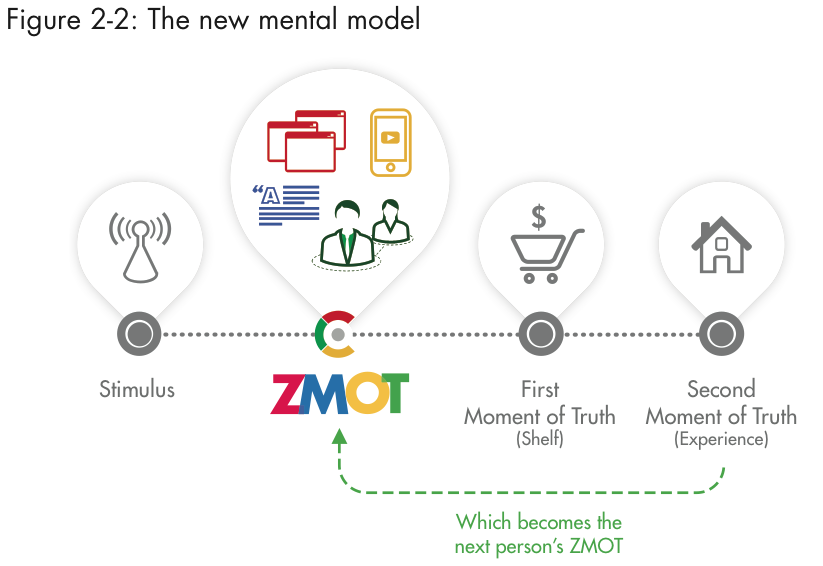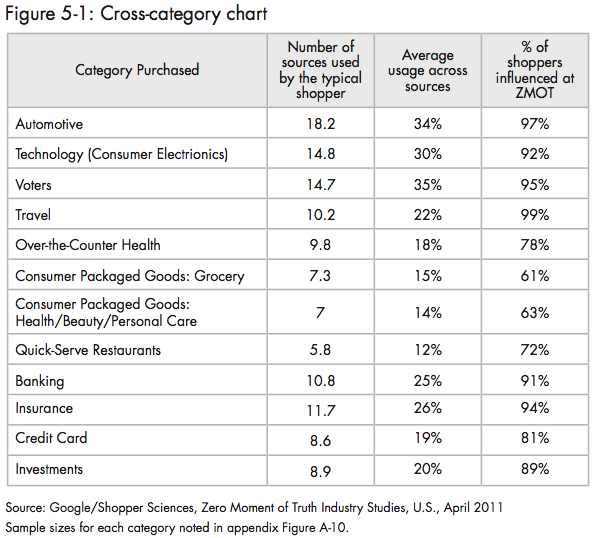Far be it for little old me to challenge the almighty, powerful Google, but just because we’ve put a name to it, ZMOT, doesn’t mean its new. The Zero Moment of Truth (ZMOT) is the name given to consumer’s online research before they try or buy a product. They’re not telling us anything we didn’t already know, but they are putting forward a compelling argument to Industry and traditional Marketers that online needs to be taken seriously, it needs to be a for-thought, not an after-thought and we need to invest in the consumer conversation.

First Impressions Count Online
Word of mouth now, as it has always been, is the most powerful influencer in a consumer purchase decision. But word of mouth has now gone digital. And while our sphere of influence used to be limited to the people we knew and trusted, now it extends to trusted product experts and public strangers. In 2011 75% of people said they trusted online reviews. Google’s ZMOT research shows that 84% of consumers (in America) are influenced by online reviews and ratings.
Our ability to talk to people about their opinions on our product purchase intent used to be limited by time and geography. We used to talk to our family, friends and neighbours, then go to the store and talk to the sales assistant, then check out the product itself, then make our decision. This could have taken weeks or months. Now we can canvass the opinions of thousands of individuals and experts in 3 clicks and a few key strokes. We make a faster decisions, based on the number of average gold stars in an online review. Because now the ratings and reviews are fresh and detailed, we can see how recent the information is and we can access it in real time on our mobile device.
Mobile has been the big game changer in how marketers need to think about and consider their digital marketing strategy. Mobile is always on, it’s in close proximity, it has features and technology that aren’t as prevalent on our computers. Mobile is intrinsically linked to social media, which is where many of the influential ZMOT reviews, comments, questions and conversations are taking place. Mobile devices are integrating the marketing moments of truth and breaking down all barriers for the consumer to access the information quickly and easily.
So what is the Zero Moment of Truth (ZMOT)?

As marketers, we still need to stimulate our audience and prepare them for the shelf and future experience, but we now need to be part of the conversation online too.
For decades markets have operated under a framework of Stimulus (advertising or marketing touchpoint) > First Moment of Truth (seeing the product on the shelf or instore) > Experience (trying to product out when you get home). And each of these purchase points is still valid, but now we have a touchpoint inbetween the advertising and the shelf, this is where the consumer is doing their due diligence. The ZMOT now has to be considered into the process.
This is where I start to get a little cynical. Yes the number of sources we have to help us make our decisions is expanding exponentially. In 2010 the average consumer used 5.3 sources of info to make a purchase decision, whereas in 2011 the average consumer was using 10.4 sources of info to make their purchase decision. But consumers have been researching products online for years. Consumers have been considering peer ratings and reviews since at least 1996 when people wanting to buy consumer electronics started turning to the ZDNet website. Admittedly, the difference is that people used to only research online for big ticket items such as homes and cars and computers. Now people are commenting online about Scotch Tape and toothpaste, accordingly to Google’s ZMOT report.

Google’s research spread across 12 different consumer categories from Politics to Automotive to Grocery items and found that online research is highly influential in all areas.
The Consideration Cycle and Consumer Purchase Funnel has changed
In my opinion what has really changed with the rise of mobile search and social media, is the non-linear way that people think, shop and buy. The mobile web gives people easy, instant access to thousands of opinions and reviews. And the time that people spend at this Zero Moment of Truth can be considerable.
And really, this is where business and marketers are falling behind, usually out of risk aversion. Too many businesses are scared of the negative sentiment that their products receive that they choose not to be part of the conversation. But what’s happening, is that people are reviewing and rating their products on independent websites and in social media, regardless of whether they engage in the conversation or not.
Google’s report found that this is no-longer a valid argument not to get involved because the average consumer rating was 4.3 out of 5 stars. The 80/20% rule is alive and well online. Most consumers who leave reviews are advocates of the product and brand, therefore the sentiment is positive.
Because shoppers no longer follow the linear funnel of: Advertising message > Consider product in store > Buy and experience at home, marketers need to invest in marketing resources in these new channels and touch points. It’s not a new strategy – go to where the people are, this is what joint ventures have been built on for centuries. I could argue that if brands and marketers continue to sink the majority of their budgets into advertising, point of sale and product development, if they do these well then the online ratings and reviews should take care of themselves. ZMOT encourages a multi-way conversation. These non-linear conversations included dialogue between consumer and brand, brand and competitors, media and brand, media and consumer, competitor to consumer and consumer to consumer. And every participant can see these public conversations.
Apple is the ultimate example of a brand that put the consumer experience (the actual product performance) as their guiding principle. This is the ad that is running on TV in June 2013 in Australia.
Apple then took their stellar product and marketed it with an emotional message that talks to the shopper about how this product will improve their lives. If the product is that good, then the ratings and reviews should reflect that. Right? Of course in a perfect world that is correct, but it’s still important for your brand to be a part of the conversation. At the first step in the Zero Moment of Truth, the first search for the product + review, its important that the product’s brand/ website is also featured in that first page of search results. This first impression is important. And really, that’s what ZMOT is, its the first online impression the consumer gets and then it influences their path to purchase.
Google says ZMOT is:
- Online
- in Real Time
- puts the Consumer in charge
- is Emotional (because the consumer is investing in finding the best solution)
- has Multi-Way Conversations.
Google says the ZMOT experience is trying to answer three questions that the consumer has:
- Can I save money?
- Can I save time?
- Will it improve my life?
What I think. ZMOT is the moment that you consider a product and then pick up your phone to see what other people are saying about it (online). ZMOT is really about getting marketers to acknowledge that there is a new decision making process, that is largely supported by mobile phones and the internet.
I like what Kim Dadlec from Johnson & Johnson said, “We’re entering an era of reciprocity. We now have to engage people in a way that’s useful or helpful to their lives. The consumer is looking to satisfy their needs, and we have to be there to help them with that. To put it another way: How can we exchange value instead of just sending a message?”
My approach to Digital Marketing and fundraising has always been to put the user at the centre of the strategy. I choose to do this with content because I believe it fulfils many other business goals as well, including influencing a consumer’s consideration cycle and purchase intent, but also because its often the first point of contact after the initial stimulus. I just didn’t have a name for it. So I guess I’m not disagreeing with Google, I agree with them wholeheartedly, I just don’t think its a new thing.
